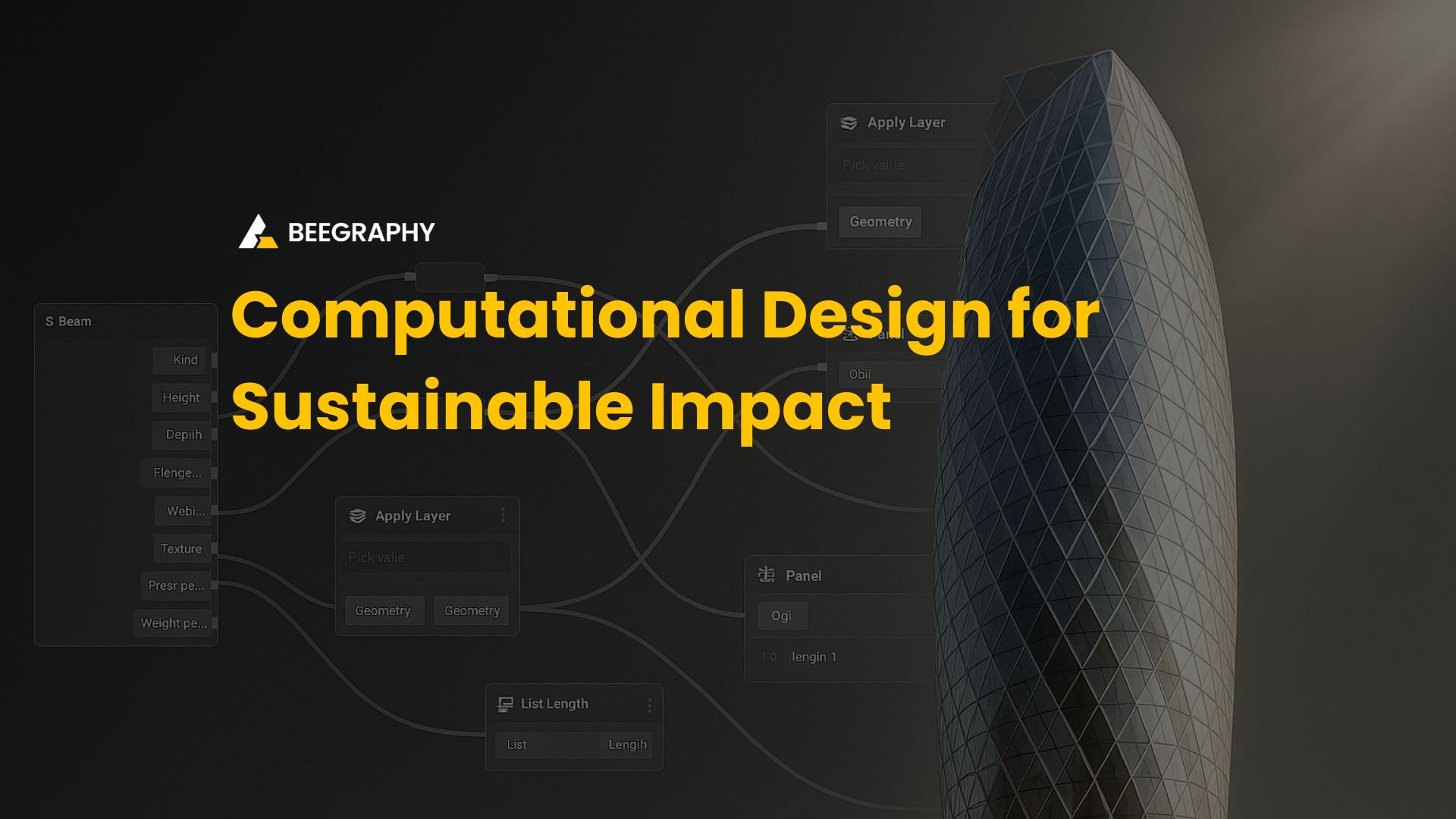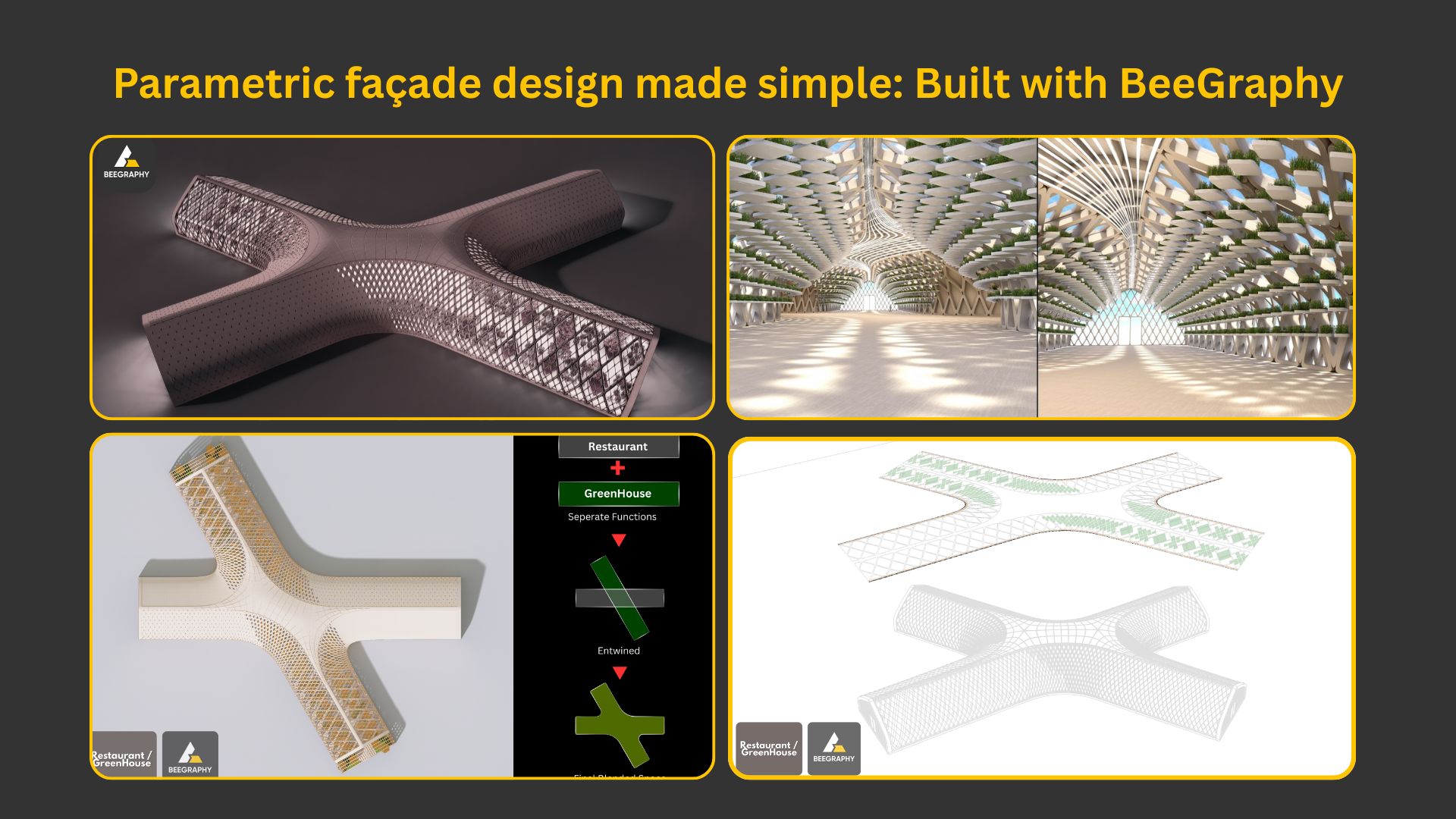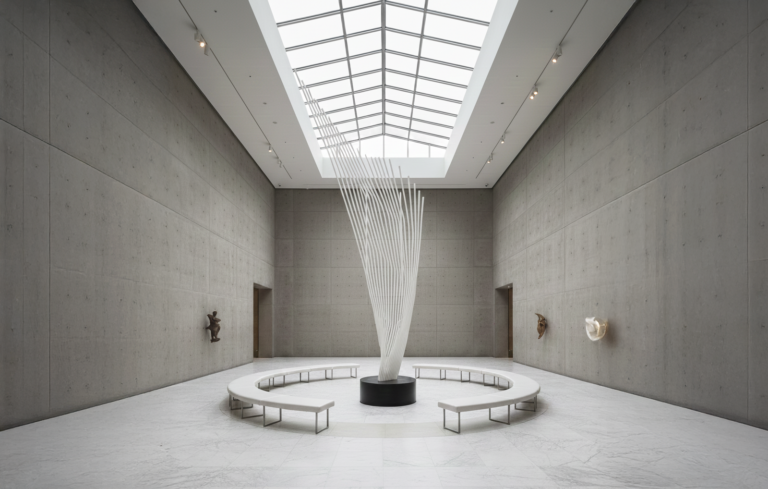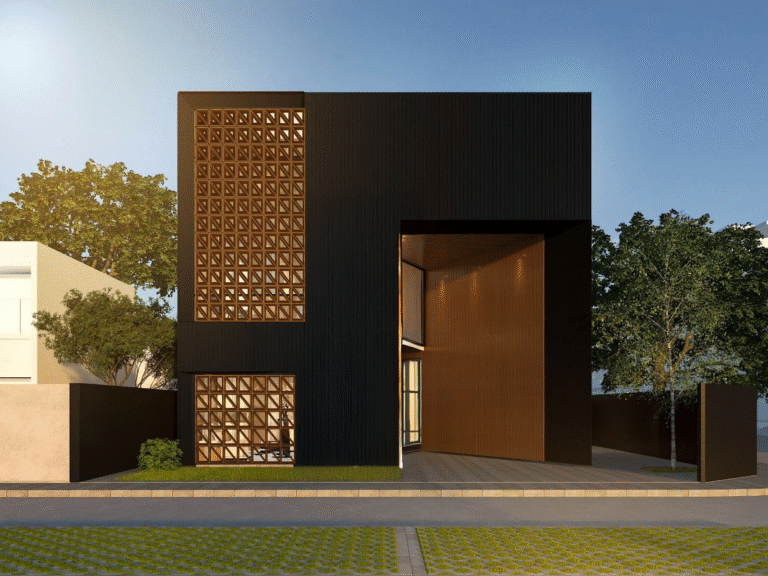Table of Contents
Every skyline speaks of progress. Towers rise, materials gleam, and glass stretches toward the sun. But beneath this architectural poetry lies a pressing truth: we’re building into a climate crisis.
By 2025, the construction and building industry will still account for 39% of global energy-related carbon emissions, with 11% stemming from construction processes and materials alone. That’s nearly two-fifths of the problem.
Architecture is no longer just about form and function; it’s about accountability. Climate targets are tightening. Resources are shrinking. Clients and regulators are demanding better. And traditional, manual design workflows, linear, static, and intuition-based, simply can’t keep up.
To meet the complexity of this moment, we need to design differently. This is where computational design enters, not as a trend, but as a new standard.
The Shift to Computational Thinking in Architecture
In conventional workflows, you sketch a form, then test it. But by the time performance data comes back, it’s often too late, or too costly, to change direction. That process is reactive.
Computational design is proactive.
At the heart of this shift lies parametric modeling, where designers don’t just draw geometry, they define relationships. Instead of fixing shapes, they write logic: “This window must always face south,” or “If the façade exceeds 60% exposure, add shading.”
Design becomes dynamic. Change one input, and the entire system adapts in real time. This responsiveness enables early integration of environmental performance into design decision-making, not after the concept, but as the concept evolves.
And it’s not guesswork. It’s simulation-driven, data-backed, and aligned with performance goals from day one.
Embedding Sustainability Through Computational Design
With computational tools, sustainability becomes an input, not a retrofit. What does that look like in practice?
- Solar radiation analysis helps optimize façade orientation, shading angles, and material reflectivity to reduce heat gain while maximizing natural light.
- Computational Fluid Dynamics (CFD) models how wind flows around a structure to enhance natural ventilation, reduce turbulence, and cool exterior surfaces.
- Daylighting simulations guide window placement and glazing choices to cut lighting energy without compromising interior comfort.
- Generative design algorithms allow teams to define criteria (like minimizing energy use while maximizing views) and explore hundreds of viable design options, instantly.
Instead of relying on intuition, architects make data-informed decisions. The result? Fewer surprises, better performance, and designs that are beautiful and resilient.

The Gherkin’s Sustainable Form Through Computational Design
The Gherkin, formally known as 30 St Mary Axe, isn’t just an architectural icon; it’s a systems-level solution to sustainable high-rise design, driven by computational logic. Designed by Foster + Partners and engineered by Arup, the tower exemplifies how early-stage parametric modeling can produce both material efficiency and environmental performance.
The core structural solution is the diagrid system: a triangulated steel framework that removes the need for vertical columns. Using algorithmic modeling, the team optimized the geometry to minimize material use, achieving a 20% reduction in structural steel, while increasing rigidity and wind resistance. The result is a lighter, more efficient structural skeleton that responds intelligently to the building’s height, load paths, and wind conditions.
But its sustainability doesn’t stop at structure. Computational analysis was used to simulate wind flow, thermal behavior, and daylight distribution across seasons. These simulations informed the placement of six spiral light wells, which act as vertical lungs, drawing in fresh air and allowing warm air to escape, reducing dependence on HVAC systems. The façade, composed of triangular glass panels, integrates 792 operable windows that open in response to real-time climate conditions, controlled by smart systems calibrated during design.
Together, these strategies form a closed feedback loop, structure, form, and climate performance iteratively refined through simulation. The building is not just designed to look iconic; it is engineered to perform.
30 St Mary Axe demonstrates that with computational design, sustainability is not layered on, it’s built in. It’s a proof-of-concept for architecture that thinks, breathes, and adapts, long before it’s built.

Gherkin Tower’s form, light wells, and façade were computationally designed to optimize ventilation, daylight, and wind flow.
Building Responsively: Sustainable Design with BeeGraphy
To embed this level of performance into everyday workflows, designers need tools that go beyond modeling. They need platforms that simulate, iterate, and respond.
A computational design tool like BeeGraphy delivers exactly that.
Rather than drafting fixed forms, designers build logic-based models. With its node-based scripting interface, BeeGraphy lets users link geometric components to environmental inputs, thresholds, and relationships, without writing code.
When one variable changes, say, the depth of a sunshade or angle of a façade, the model updates in real time, preserving design logic and performance constraints. This enables fast iterations without starting over or redrawing.
But BeeGraphy goes deeper than visual updates:
- It allows you to modularize your design systems, build a responsive façade once, and adapt it across projects with varying site conditions.
- You can group parameters, control user inputs, and export design-ready outputs like STL or DXF,directly for manufacturing or client review.
- It’s fully cloud-based, enabling real-time collaboration without heavy setup or software downloads.
This makes computational design accessible without compromising precision or technical depth.
With tools like this, sustainability is no longer layered in later. It becomes part of the design DNA, adaptable, collaborative, and performance-driven.
Sustainable Architecture Starts with Computational Thinking
The deadline for climate action is no longer in the distance. It’s here.
Designers now face a landscape shaped by LEED v5, ESG expectations, circular construction goals, and material scarcity. Clients are demanding accountability. Budgets are tighter. And the environmental stakes are higher than ever.
We can’t afford to design in a straight line.
That’s why we must build smarter, by embedding algorithms, simulations, and logic into the creative process. We must build sustainably, by designing systems that optimize energy, adapt to context, and reduce material waste. And most importantly, we must build with clarity and precision, using tools that help us test, measure, and improve every idea before it hits the ground.
With computational design platforms like BeeGraphy, we have everything we need to lead this change, from concept to fabrication, inside a browser, with zero compromise.
So let’s build systems that think.
Let’s create buildings that adapt.
Let’s design with logic , and build for the future.











